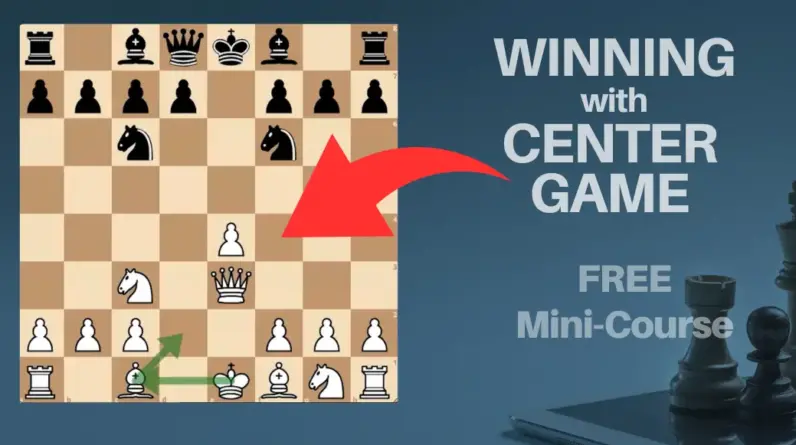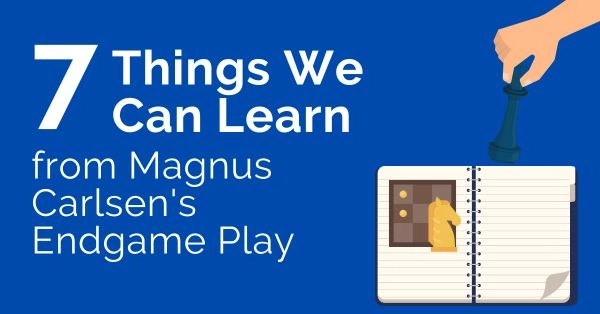Last week, we moved further towards the end of the game we are analyzing. We applied the games principles we have studied thus far to determine why each move was made. While this game doesn’t end in a traditional endgame, there are a few endgame elements that will appear. Therefore, I decided to give you a brief and simple explanation of endgame to use when doing your move analysis. This will also help you when we go into a more detailed examination of endgame principles. We’ll start by defining the endgame.
The game of chess is divided into three phases, the opening, middle-game and endgame. One phase will transition into the next phase and the smoother the transition, generally the better your game will be. I cannot stress enough the importance of considering the implication a move has on the next game phase you’ll enter. In other words, when making a move during the opening, you should consider how that move will affect your middle-game (and endgame as well). We will look at this later in this series of articles, so don’t get stressed out over trying to achieve this strategic technique as a beginner. Just keep it in mind for later.
The biggest problem, from a learning viewpoint, is that there’s no set number of moves to define each game phase. Rather, game phases are defined by certain actions having taken place or positions being reached. Take the opening for example: The opening ends when you’ve controlled the center with a pawn, developed your minor pieces, castled your King, and connected your Rooks. However, specific openings may not employ exactly those actions and still come to an end. The same holds true for the endgame: Generally, the endgame begins when there are very few pieces on the board as well as a few pawns (and your King, of course). Unfortunately, there are too many combinations of pawns and pieces left on the board during a game to define an exact starting point for the endgame. Then there’s the middle-game: It’s anything between the opening and endgame!
For our purposes, we’ll define the endgame as a position in which both players have a few pawns and/or pieces left on the board, and it is safe to introduce the King into the action. The ability to bring the King into play is a good defining point when determining whether you’re in an endgame position. The endgame has a drawback for beginners, it is often where they lose the game when facing off against stronger players. Why does this happen? In youth chess, this is due to children finding the endgame rather boring, and the need to be able to do deeper or longer calculations to determine the outcome of each move rather daunting. Let’s look at each of these issues.
When you teach chess to younger players, especially in schools (as I do), you have a finite amount of time to teach your students how to play. The opening and middle-game, and all that these two phases encompass (principles and tactics), takes time to teach and learn. My younger students want to learn how to capture pawns and pieces and win the game. Attacking chess is exciting chess. Moving pawns and pieces around the board with nothing to show for it in the way of material is boring. Of course, adults know this to be completely wrong, but you must think in terms of a child’s perspective here. My students love the middle-game because that is where the bulk of tactics take place. They dig into their opening studies once they realize that you don’t have a good middle-game (and the chance to apply tactics) unless you set it up during the opening. However, since the endgame doesn’t seem as exciting to them, they tend to avoid any serious study of this final phase. Adding to this is the problem that most beginner’s games end before the endgame takes place.
During the endgame, material losses are magnified. The loss of a pawn during the opening or middle-game isn’t as bad as the loss of a pawn during the endgame. Why? Because you have more material during middle-game at your disposal. Let’s say you and your opponent have two pawns each during the endgame. If you lose a pawn, your opponent now has twice as many pawns as you do. Every pawn and piece counts during the endgame and losing material will often cost you the game. Then there’s mating attacks.
Beginners first rely on their Queens and Rooks to deliver checkmate. When I examine the checkmates of my beginning students, most of them involve the Queen or Rooks. This happens because I teach simple mating patterns, such as a pair of Rook against a lone King or King and Queen against a lone King. Students rely exclusively on these pieces to win games. To combat this, I quickly show m students games in which minor pieces are used for mating attacks. Still, they rely on the Queen and Rook.
Now that we’ve talked about the major and minor pieces a little, let’s talk about the pawns. Beginners tend to throw their pawns away early on because of there are plenty of them at the game’s start and because of their low value. Even though I repeat the mantra “a pawn promotes if it gets to the other side of the board, my students don’t treat their pawns with respect at the start of their chess journey. They just trade them off. One of the things I do to help students learn calculation skills, is to place both players Kings and a single pawn for each player randomly on the board. I then ask them to determine whether each pawn will be able to promote and how long that promotion will take (in moves). I have them play it through as White and then as Black. They are forced to start using their King to either stop the enemy pawn or promote their pawn. This is an easy introduction to endgame play. I then add a random piece to the mix.
The point is to get students developing long term calculation skills in the simplest way. Since pawns are limited in their movement and Kings can only move one square at a time, the task at hand is doable for a younger player.
We are going to finish our game in my next article and then dig into our endgame studies. I cannot stress the importance of studying the endgame. The games I have won against stronger players have only been a win for me because I did some very serious endgame studies and review my endgame play on a regular basis. Of course, you need to be an all-around good player, well versed in each of the game phases. Too many players are specialists, being good at the opening but not at the middle-game. Today’s top players are all-around players. You should be an all-around player, not a specialist. There is no game to play through this week, but I want you to do the exercise I mentioned with the King and pawn. It will help you develop your overall endgame skills. See you next week!
[strong]Hugh Patterson[/strong]






